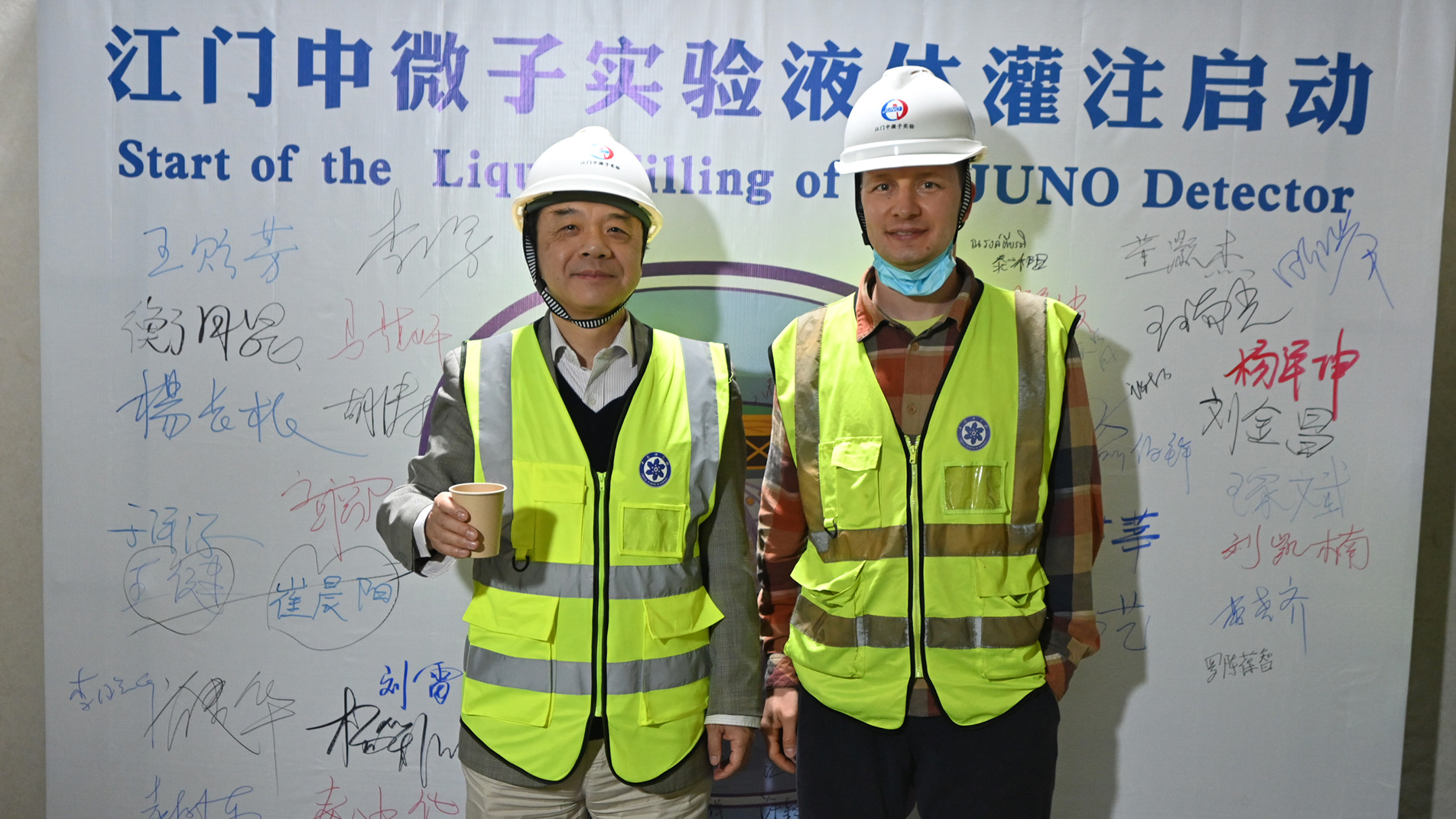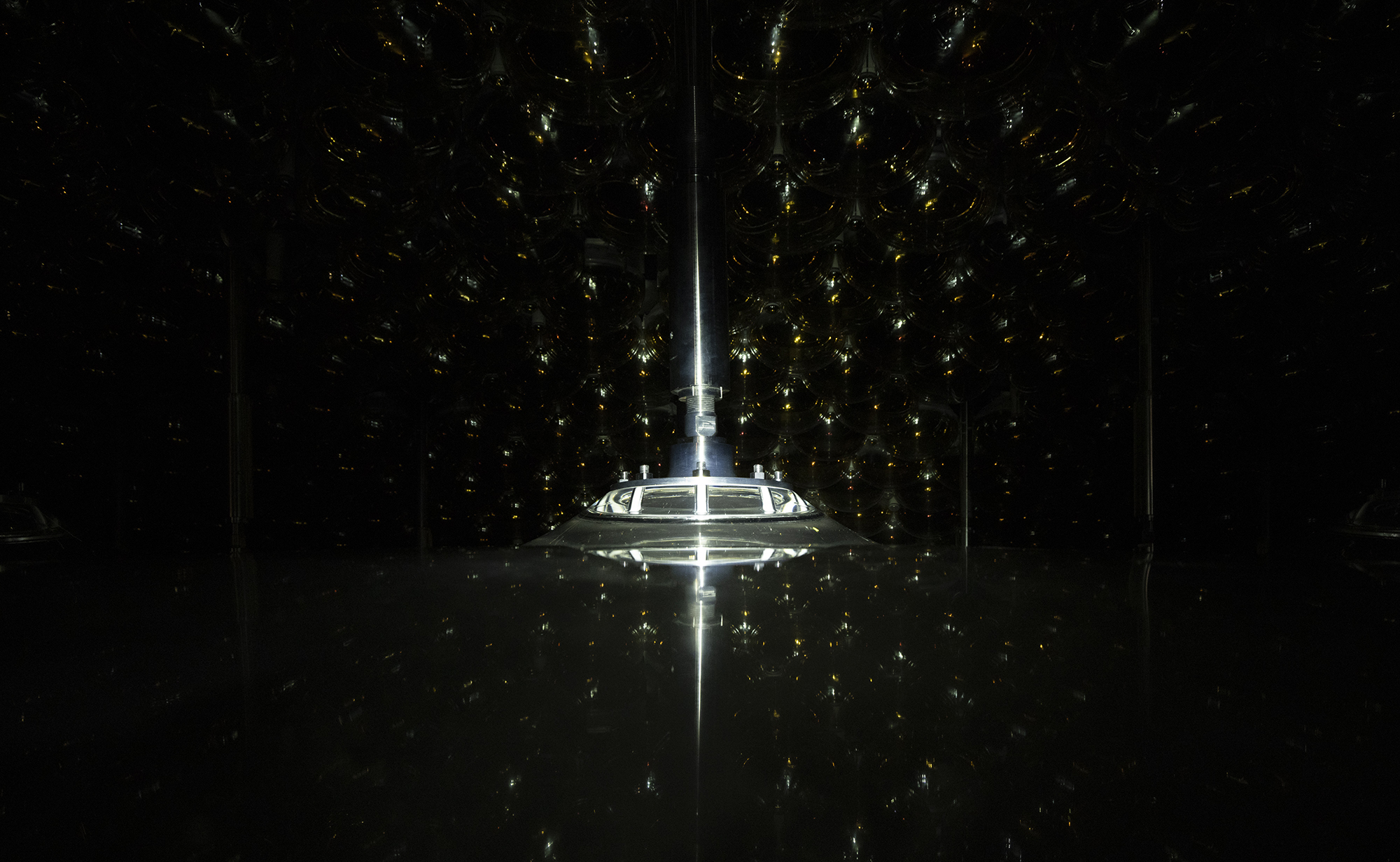Important development stage of JUNO Experiment finishes
News, 19 December 2024
The large-scale international JUNO Experiment studying reactor electron antineutrinos is entering the final phase of the facility creation. Together with colleagues from China, scientists from the Laboratory of Nuclear Problems at JINR are actively involved in the development of the project, assembling and preparing the equipment for launch.
 JUNO Collaboration Spokesperson Yifang Wang and Head of the DLNP Reactor Neutrino Sector of the Scientific and Experimental Department of Elementary Particle Physics Maxim Gonchar at the commissioning ceremony of the JUNO central detector
JUNO Collaboration Spokesperson Yifang Wang and Head of the DLNP Reactor Neutrino Sector of the Scientific and Experimental Department of Elementary Particle Physics Maxim Gonchar at the commissioning ceremony of the JUNO central detector
After the successful assembly of the central detector, completed in autumn 2024, its commissioning began on 18 December. At this stage, the detector will be filled in, and about 18,000 photosensitive recording elements (photomultiplier tubes, PMT) will be gradually activated.
This period is critical for the preparation of the experiment, since this is exactly when the first data will be collected. Scientists will carry out extensive work on testing reconstruction and selection algorithms, measuring the radioactivity of the working substance and electronic noise, assessing the background events contribution, and calibrating the detector response. The physical data collection is expected to start in autumn 2025.
The participants are currently working in shifts at the subsystems of the JUNO Collaboration facility. Water purification and circulation systems are working in the pool of the central detector and the auxiliary OSIRIS Detector, which is already collecting data. A liquid scintillator purification system is in operation as well.
When the water level reaches the lower PMTs, the power supply and data collection from the PMTs under water will begin. The process of filling the detector with water will take two months at a supply level of 80 m3/h, after which data will be collected in the “water mode” for one week. Then, in the span of six months, the water will be gradually displaced by a liquid scintillator. The researchers will be collecting data throughout the entire process. As a result, the water will flow to the “pool”, while the liquid scintillator will fill in the central detector.
In parallel with the final stage of the development of the main JUNO Detector, preparations for the creation of the Top Tracker Muon Detector finished. The support structure of the satellite detector was assembled at the Taishan Nuclear Power Plant, with all photosensitive elements and electronics installed. Employees of the DLNP JINR Sector of the Scientific and Experimental Department of Elementary Particle Physics take an active part in the construction of the JUNO detectors.
